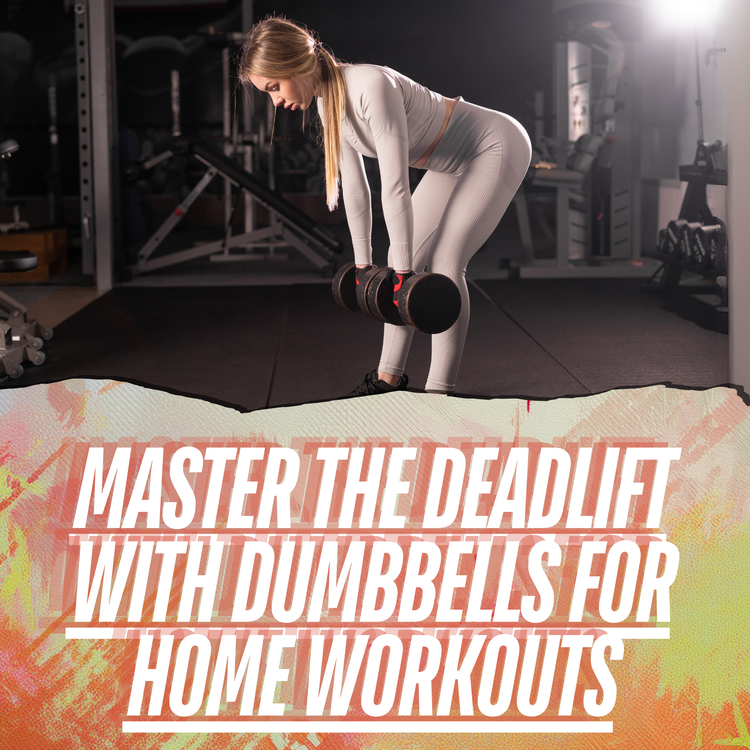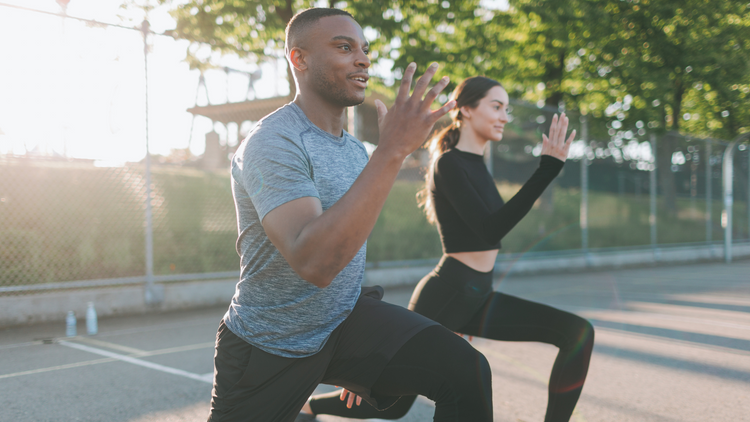Master Deadlift with Dumbbells at Home

Deadlifting with dumbbells at home is a great way to build strength and improve your fitness routine without needing a lot of space or equipment. Unlike traditional barbell deadlifts, using dumbbells are flexible and easy to include in your home workouts. Dumbbells are not only easier to get but also allow for a greater range of motion, which can help target different muscle groups more effectively.
One of the main benefits of using dumbbells for deadlifts is the lower chance of injury when compared to heavier barbells. This makes them ideal for beginners or those working out at home without a spotter. However, it's crucial to keep good form to stay safe. Paying attention to your posture and movements ensures that you get the most out of your workout while keeping your body safe.
Benefits of Deadlifting with Dumbbells
Using dumbbells for deadlifting has several benefits:
- Better Balance and Coordination: Since dumbbells require each side of your body to work independently, they help improve balance and coordination.
- Greater Muscle Activation: Dumbbells let you move more deeply, which can lead to greater muscle activation, especially in stabilizing muscles.
- Versatility: Dumbbells can be used for a variety of exercises, making them a versatile addition to any home gym setup.
- Convenience: They are easier to store and transport than barbells, making them perfect for home workouts.
Strength training, like deadlifting with dumbbells, is beneficial for building muscle, increasing bone density, and enhancing overall health. For more information on the benefits of strength training, you can visit the Mayo Clinic's guide on strength training.
How to Perform a Deadlift with Dumbbells
Performing a deadlift with dumbbells is a great way to improve your home workouts. It's important to focus on maintaining proper form to get the most out of it and stay safe. Follow these steps to master the technique:
- Start Position: Stand with your feet hip-width apart, holding a dumbbell in each hand. Your arms should hang naturally by your sides, palms facing your body.
- Engage Your Core: Tighten your core muscles to stabilize your spine throughout the movement.
- Lower the Dumbbells: Hinge at your hips, pushing them back while keeping your back straight. Lower the dumbbells close to your legs until your torso is nearly parallel to the floor.
- Maintain Form: Keep your shoulders back and your gaze forward to ensure proper alignment. Avoid rounding your back.
- Lift the Dumbbells: Push through your heels to stand back up, bringing your hips forward and pulling the dumbbells back to the starting position.
For more detailed guidance on proper form, visit MedlinePlus Medical Encyclopedia.
Avoiding Injuries and Enhancing Performance
While deadlifting with dumbbells, it's crucial to avoid common mistakes that could lead to injuries. Here are some tips to keep you safe and enhance your performance:
- Warm Up: Always start with a warm-up to prepare your muscles and joints. Dynamic stretches and light cardio can be effective.
- Use the Right Equipment: Consider using deadlift straps to improve your grip strength, especially if your hands tend to slip during the lift.
- Focus on Form: Maintain a straight back and engage your core throughout the lift. Avoid rounding your shoulders or back.
- Progress Gradually: Start with lighter weights and gradually increase as you become more comfortable with the movement.
Deadlift straps can be particularly helpful for enhancing grip strength, allowing you to focus more on your form and less on holding the weights. For further safety tips, check out Henry Ford Health.
Alternatives to Deadlift: Rack Pull
While mastering the deadlift with dumbbells is a great way to build strength, sometimes you need a little variety or a supplementary exercise to keep things interesting. Enter the rack pull. This exercise is a great alternative if you're looking to target similar muscle groups with a slightly different focus.
The rack pull primarily works your back and is performed using a barbell. Here's how you can perform it:
- Set up a barbell on a rack at knee height or just below.
- Stand with your feet shoulder-width apart and grip the bar with both hands, using an overhand grip.
- Keep your back straight and your core engaged as you lift the bar by extending your hips and knees.
- Stand tall at the top, then lower the bar back to the rack with control.
Benefits of the rack pull include:
- Improved back strength and muscle development.
- Less strain on the lower back compared to a full deadlift.
- Enhanced grip strength, which can be further supported by using deadlift straps.
Conclusion and Next Steps
By focusing on proper form, you can avoid injuries and see better results. Remember, variety is key, so consider incorporating exercises like the rack pull into your routine.
As you continue your fitness journey, explore Living.Fit's range of digital workouts for more guidance and inspiration. Our gym mats and weight benches can make your home workouts more comfortable and effective, helping you stay on track with your goals.
When performing deadlifts with dumbbells, it's crucial to maintain proper form and technique. This helps prevent injuries and ensures you get the most out of your workout. Let's explore the benefits and how you can safely incorporate this exercise into your routine.










